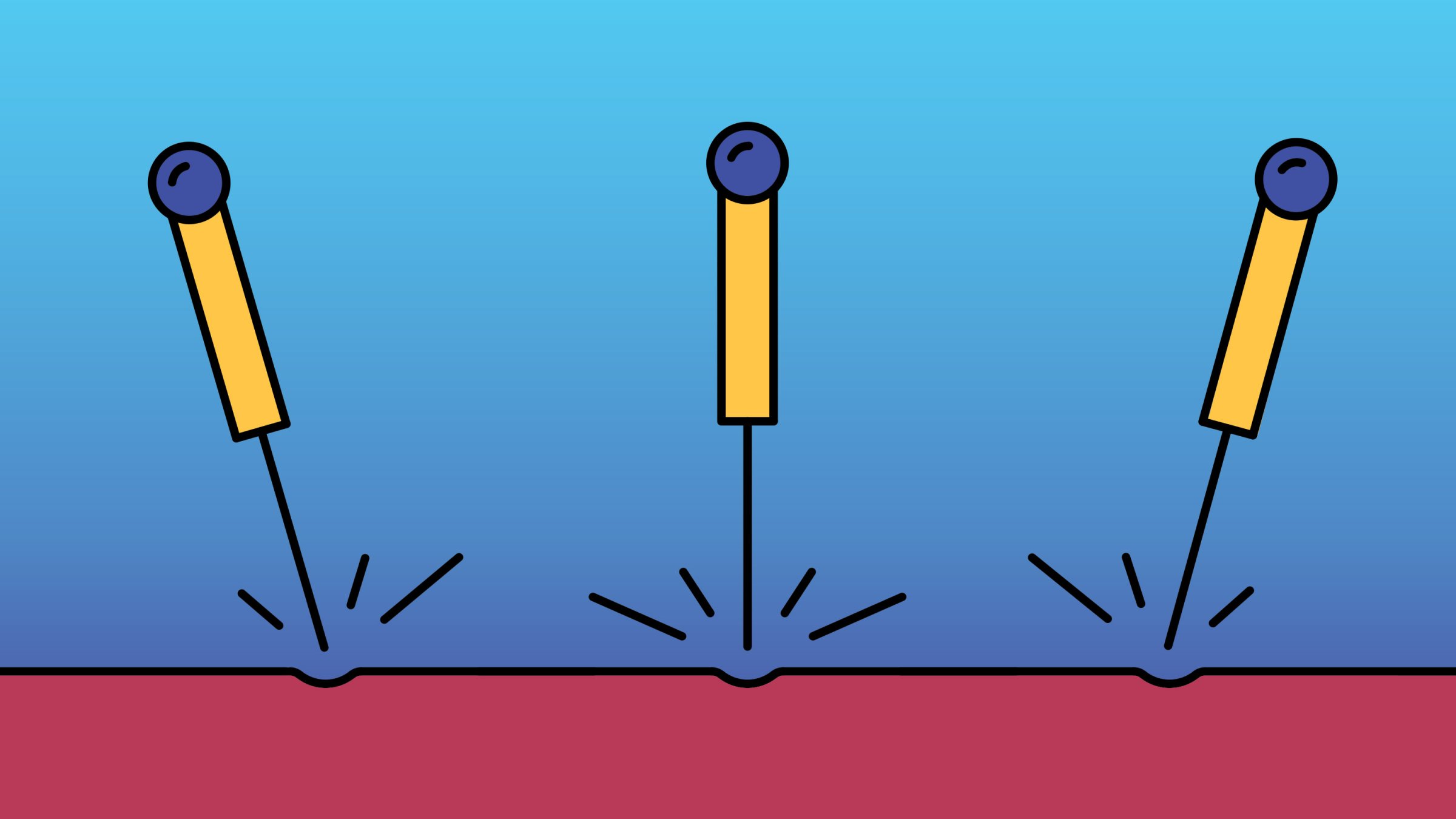
Acupuncture may help babies who cry too much, according to a new study published in the journal Acupuncture in Medicine. Infants with colic—crying for more than three hours a day, for at least three days a week—had fewer symptoms after getting the traditional Chinese needling technique compared to the standard treatment.
Most human acupuncture research has been in adults, and studies have linked the practice with reduced pain, improved gastrointestinal function and increased calm. To find out if it might help with excessive crying in infants, researchers recruited 147 healthy babies between two and eight weeks old who had all been diagnosed with colic.
The babies and their families were assigned to one of three groups, and they visited a child health center twice weekly for two weeks. Parents in all three groups spoke with a nurse about their child’s symptoms, and two of the groups also received acupuncture.
Some patients were given standard minimal acupuncture at LI4, a spot on the hand between index finger and thumb, for 2 to 5 seconds. The second group received acupuncture at up to five locations on the hands and legs, for up to 30 seconds with mild stimulation.
All of the parents kept diaries of how much time the babies spent crying at home. After two weeks, all three groups were crying less—an expected result, say the researchers, since colic tends to eventually clear up by itself.
But the reduction in crying was greater in both acupuncture groups than in the standard-treatment group, suggesting a faster recovery. During the second week of the experiment, only 16 babies in the standard acupuncture group and 21 in the tailored group still met the criteria for colic, compared to 31 babies in the standard-treatment group.
The results also suggest that acupuncture could have a lasting impact. Six days after the final clinic visit, the differences between the acupuncture and non-acupuncture groups remained. Overall, there were no meaningful differences between results in the two acupuncture groups.
The babies tolerated the acupuncture well. Sleeping babies rarely woke during treatment, and 200 of the 388 treatments given involved no crying at all. Only 31 sessions involved crying for longer than a minute, and only 15 resulted in any bleeding. (In each of those cases, only a single drop of blood was noted.) Three families dropped out of the trial before it ended.
The treatments were performed by licensed acupuncturists with an average of 20 years experience. They had also attended an education day specifically about acupuncture for colic.
Fussing and crying are normal for babies, the authors point out, and the goal of treatment should be a reduction to normal crying levels, not complete silence. Tired and worried parents often overestimate normal crying, says lead author Kajsa Landgren, a nurse and lecturer at Lund University in Sweden, so those considering further treatment should first keep a diary of crying times to determine if it really is excessive.
Landgren also recommends eliminating cow’s milk from a baby’s diet before seeking acupuncture or other treatment. (This means choosing formula without cow’s milk protein, or, if a mother is breastfeeding, avoiding cow’s milk herself.) Doing so can help treat excessive crying; in a weeklong registration period for the study, this helped treat excessive crying in 269 of the 426 babies initially identified for the research.
But for the 10% to 20% of families who struggle with infantile colic even after these steps are taken, “minimal acupuncture seems to be a safe and effective treatment,” Lundgren says.
Dr. Erica Sibinga, chair of the American Academy of Pediatrics Section on Integrative Medicine and associate professor of pediatrics at Johns Hopkins School of Medicine, says the study was rigorously designed and well conducted, and that it touches on an important and distressing issue for infants and their parents. “I believe this treatment sounds extremely promising for a difficult clinical problem,” she says, “and given the exemplary safety profile of the acupuncture treatments, I will be happy to recommend to patients.”
Sticking babies with sharp objects may sound unpleasant, but consider this, Dr. Sibinga says: The needles used in acupuncture have a much smaller gauge than those used to draw blood or give immunizations, so they’re less likely to cause discomfort or damage. Landgren adds that acupuncture in children generally uses fewer needles and milder, shorter periods of stimulation, compared to acupuncture in adults.
In fact, Landgren says that acupuncture is performed routinely in pediatric pain clinics in the United States, and has also been used to treat bed wetting, ADHD, nausea and constipation. In some cases, it allows less medication to be given: an important benefit for young children who are more sensitive to the effects of drugs.
Although research on infants is sparse, some earlier studies have shown promise for colic and pain. “I think that acupuncture is especially interesting in symptoms where there’s no other safe method or medication that relieves the symptoms, like in colic,” says Landgren. “And many desperate parents are willing to try complementary medicine.”
Parents who are interested in this treatment—and doctors who want to refer patients—should look for trained, licensed and experienced Traditional Chinese Medicine practitioners who are interested in working with infants and their families, says Dr. Sibinga, and who can provide treatments comparable to those in the study.
More Must-Reads from TIME
- Introducing the 2024 TIME100 Next
- The Reinvention of J.D. Vance
- How to Survive Election Season Without Losing Your Mind
- Welcome to the Golden Age of Scams
- Did the Pandemic Break Our Brains?
- The Many Lives of Jack Antonoff
- 33 True Crime Documentaries That Shaped the Genre
- Why Gut Health Issues Are More Common in Women
Contact us at letters@time.com